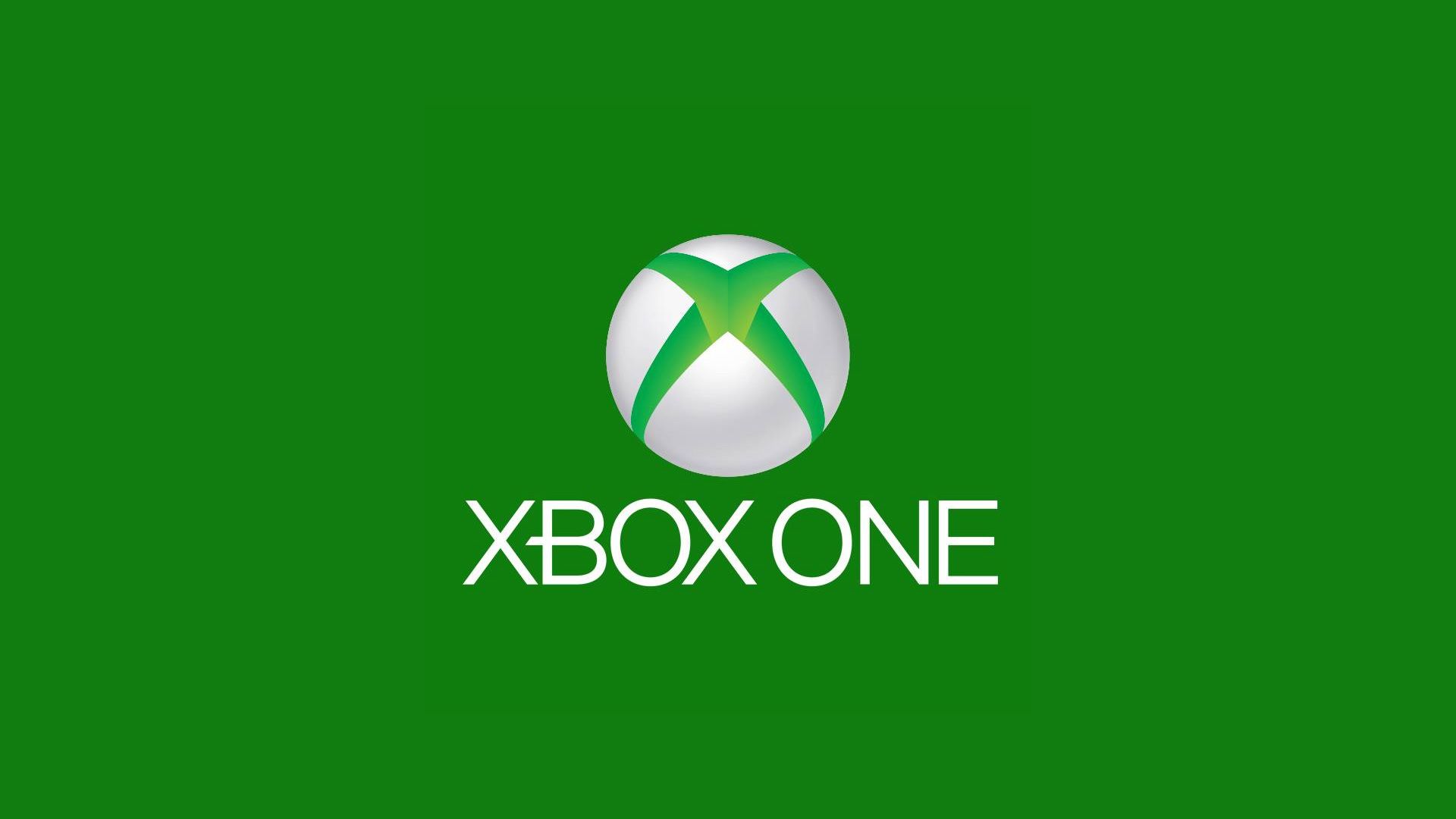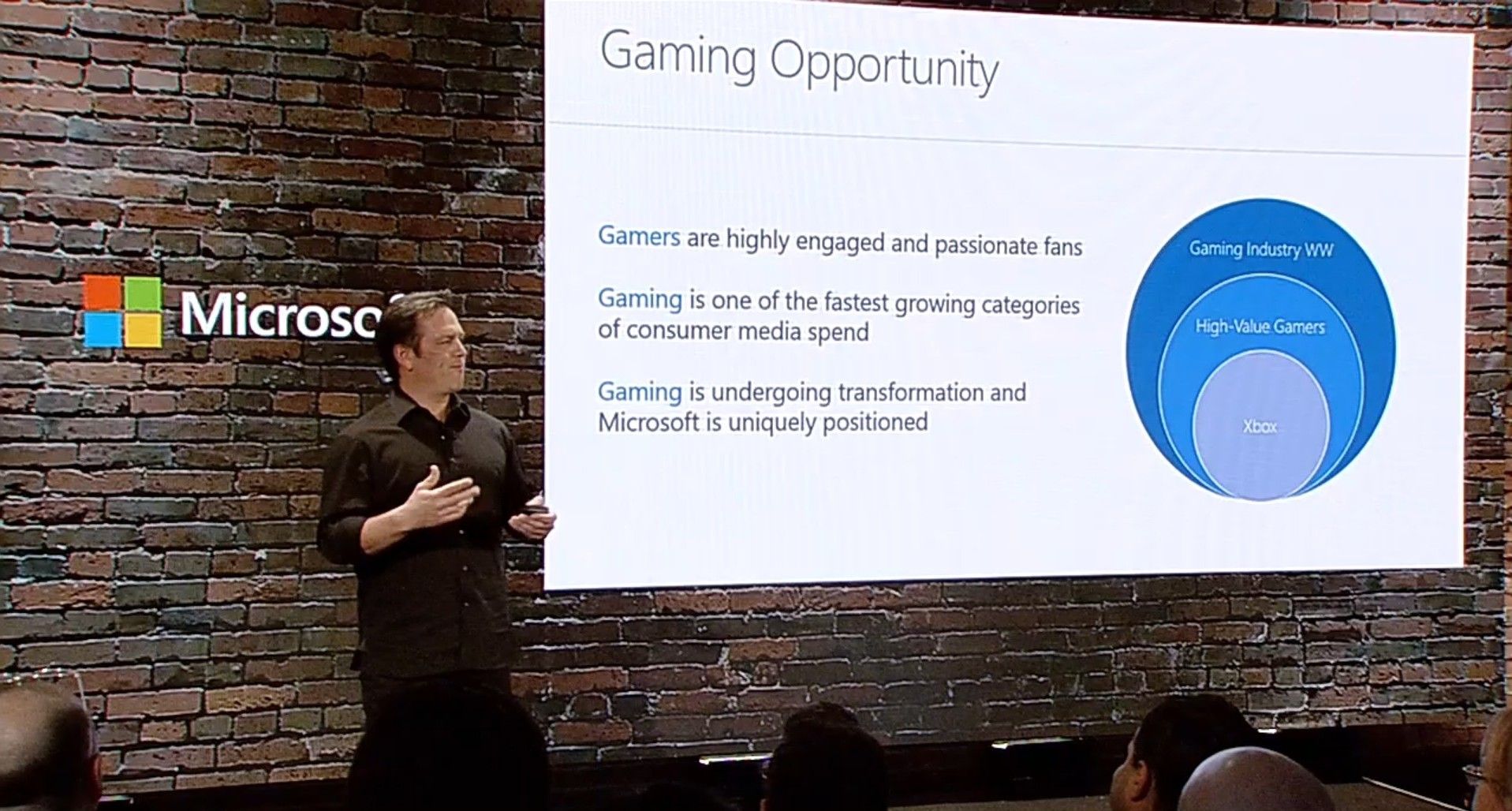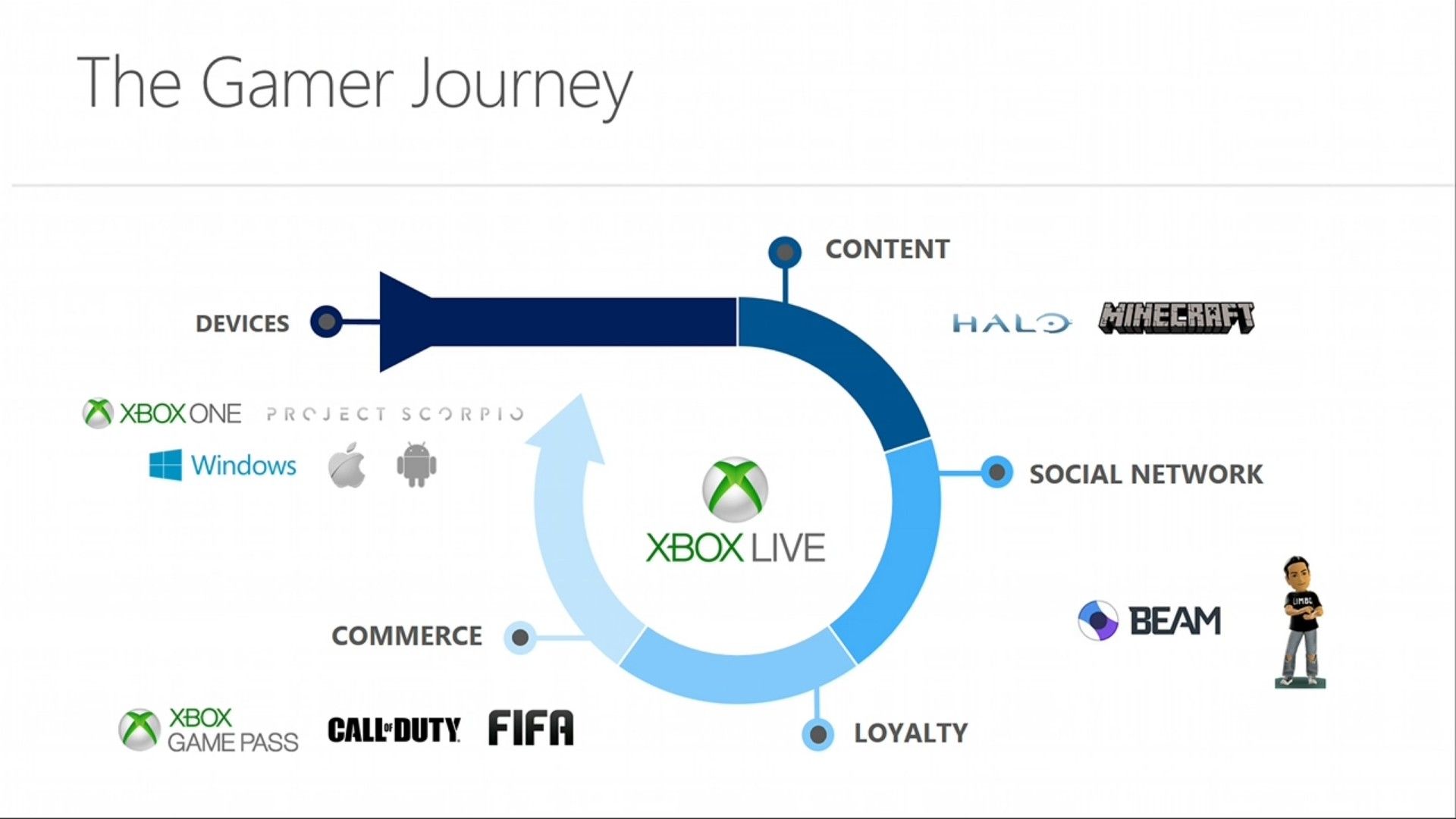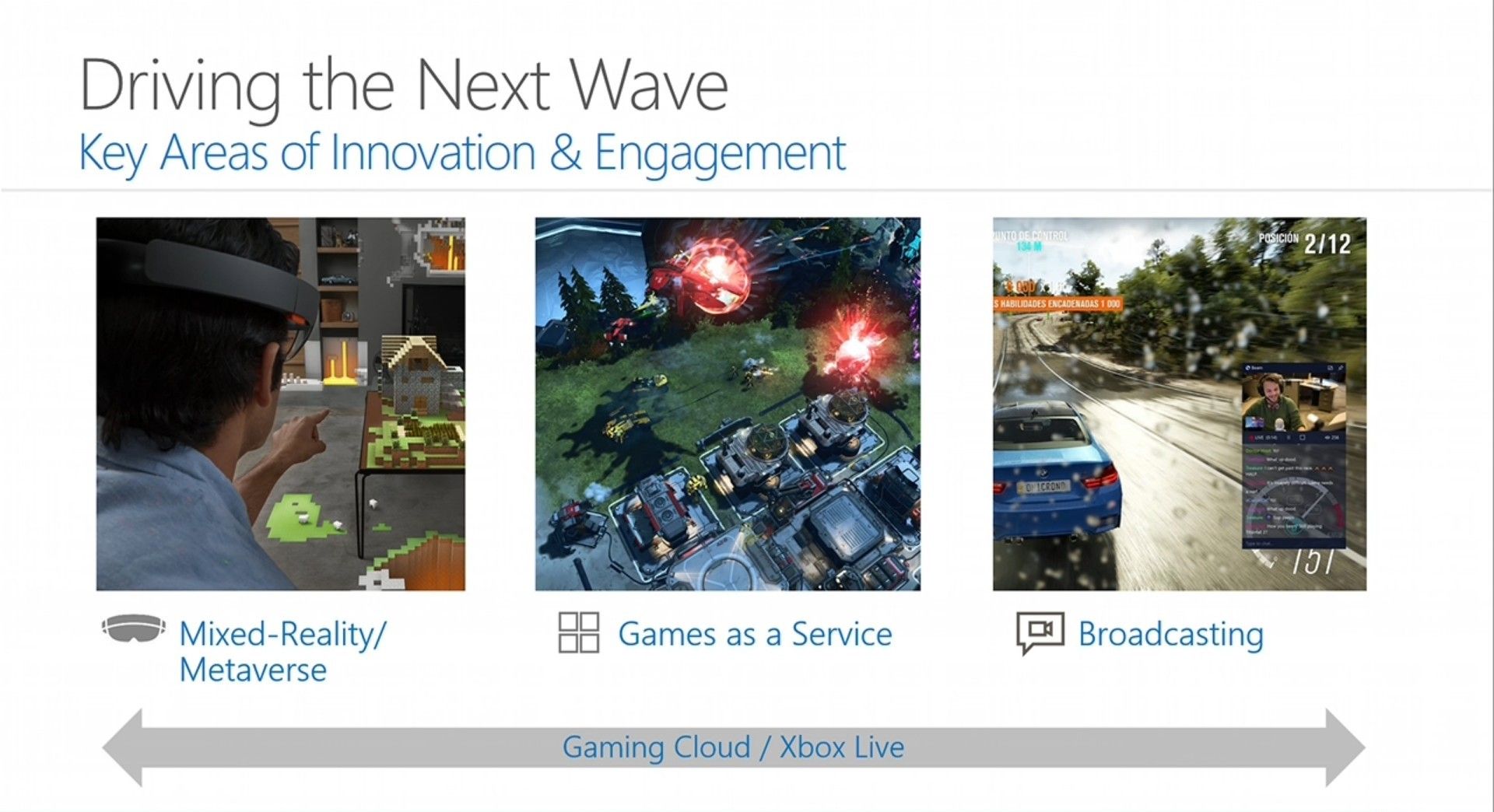During Microsoft's Financial Analyst Briefing 2017 in Seattle, Xbox Division Head Phil Spencer talked about the future of the Xbox business.
Spencer began by explaining that there are two billion gamers on the planet, and since 2012 the gaming business has doubled in size.
For any device with a screen, gaming is probably the highest monetized form of entertainment on it, and the one with the highest engagement.
Microsoft's gaming business originates from console, but the company looked at its assets, and realized that the number one asset that they have is their customers, and the engagement that they put in Xbox Live.
Gaming broadcasting is expanding, and the broadcast of a major esports final eclipses any traditional sport final out there. Microsoft saw this as a great opportunity to ride this digital transformation.
According to Spencer, gamers come into the gaming market through many different devices, including consoles. Devices are bought because customers want to play great content, and Microsoft believes that content is what draws people into the cycle, which is why they invest in "great first party content" like Minecraft, Halo and Forza.
This attracts users into Microsoft's social network, and then they start to build loyalty. Xbox Live becomes the place where people find their digital friends and where they stay connected to them.
As a results, this drives commerce, and a cycle starts: new developers bring new content, that attracts more users to the social network, and then the cycle begins all over again.
Monthly active users numbers are growing across every device, and gaming broadcast helps bringing in users from mobile devices as well. Minecraft also does "incredible well" in the mobile space.
Investing into first party content kickstarts the flywheel of the cycle into new areas, and the acquisition of Beam allows Microsoft to create new interactive innovations between viewers and players, to create both new fun and new monetization opportunities for the streamers themselves and for the content creators. Avatars are also a really good business for the company by selling avatar items.
In the last quarter of calendar year 2016, Xbox Live had its first billion dollar monetization quarter, and developers have figured out not only how to sell front-line games on Xbox Live, but also how to monetize on the tail-end of their titles. The fundamental way to drive revenue for a gaming company is to drive monetization in the network, and Xbox Live is the core of that.
Spencer mentioned that at E3 Microsoft will talk about the "next wave of big hits" that will come. and Microsoft will continue to invest on first party opportunities to accelerate the flywheel leading to the growth of Xbox Live.
According to Sspencer more broadcast hours will be viewed this year than there will be actual gameplay hours, and this will expand engagement further.
Gaming also drives the next wave of innovation and engagement. For instance, with Mixed Reality and HoloLens, gaming is one of the key factors for their growth.
Microsoft hasn't talked a lot about Metaverse yet, but Spencer painted a scenario with gamers being into the Xbox Live social network, and that environment looking actually physical. When one logs into Xbox Live, he actually walks into a room and sees the avatars of his friends into that space, and is able to actually interact with them directly.
Spencer explained that, while retail games are still doing well, and you see huge games doing great business, "tremendous" game assets are built in the free-to-play games-as-a-service model, relying on ongoing engagement. Xbox Live is the oxygen bringing users to those games regardless of what devices they're on.
Broadcasting is also critical, and the cloud is something Microsoft hasn't talked about enough: normally they talk about the consumer-facing features of Xbox Live, but there is a whole other side, that is the developer-facing features.
Developers want to build service-based games that are able to reach tens of millions of users, and potentially hundreds of millions of viewers. With the work done on the Azure cloud and Xbox Live, Microsoft can unlock those capabilities for developers. That's why the company is investing a lot for their Azure gaming tools to reach every developer out there, leveraging the learnings from Xbox Live and the needs of the developers in the areas of broadcast and gameplay.
Spencer concluded mentioning that the gaming business is currently riding the same secular transition and digitization that can be seen in every other business. The position Microsoft has with Xbox Live, with its first party assets, and the ability to rach customers on any device, will be a strong draw in the future.




